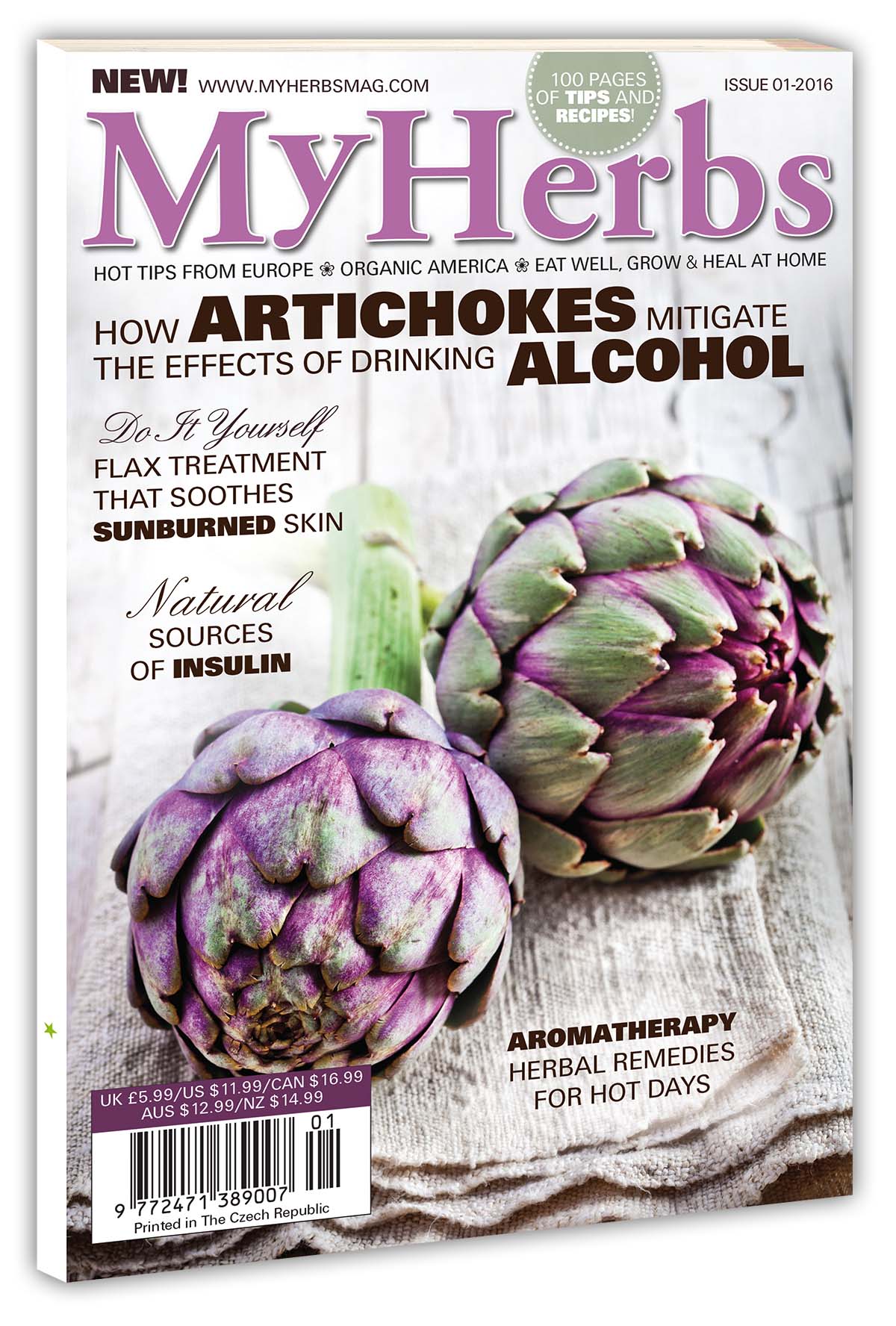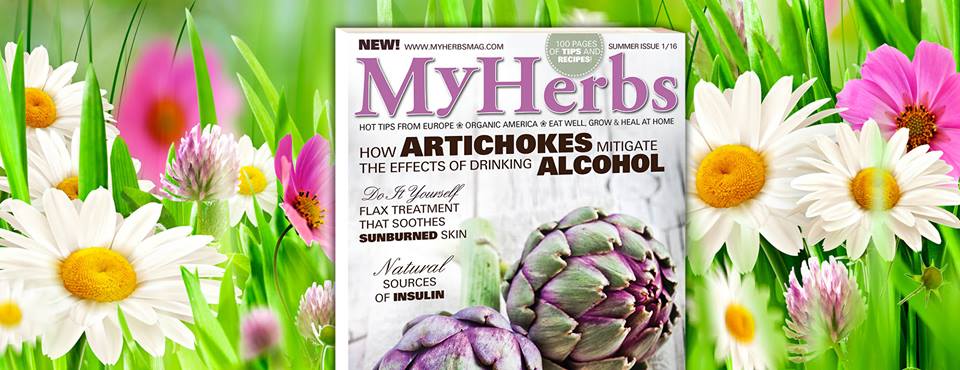Yarrow – Achillea millefolium
Yarrow is a very well known plant because it is quite distinctive and grows virtually everywhere. Its white flowers are eye-catching, and an herb such as this is difficult to overlook. Its Latin name is owed to the mythical hero Achilles, who reportedly nursed his warriors’ bloody wounds in the Trojan War.
Yarrow is found naturally throughout Europe and Asia, later being transported to Australia and North America, where it is now quite widespread, too. We can come across this plant in any sunny location, such as dry meadows and bounds, the edges of forests, along paths, in sparse forests and even rubble.  One can also see this plant in the plains and in foothill areas. Yarrow is a perennial, bitterly aromatic herb. It grows to a height of 20–70 cm (8-28 inches) and has a creeping rhizome and straight stems. The leaves have a characteristic, unmistakable structure and are varied, amphioxus or linear. On top of the stalks, tubular flowers with a dirty white color sprout in abundance, blooming from June to September.
One can also see this plant in the plains and in foothill areas. Yarrow is a perennial, bitterly aromatic herb. It grows to a height of 20–70 cm (8-28 inches) and has a creeping rhizome and straight stems. The leaves have a characteristic, unmistakable structure and are varied, amphioxus or linear. On top of the stalks, tubular flowers with a dirty white color sprout in abundance, blooming from June to September.
 Active Compounds
Active Compounds
Active substances can be found throughout the flowering tops, including oils containing sesquiterpenes, flavonoids, chamazulene, alkaloids, tannins, nitrogen compounds, furocoumarines, and the list goes on. The herb itself has contracting, slightly antiseptic, anti-inflammatory effects and significantly accelerates blood congealing. Internally it encourages sweating and reduces fever.
Yarrow’s effects associated with digestion are well known; it promotes the production of gastric juices, reduces stomach cramps, and is used to treat anorexia as well as stomach ulcers. Yarrow is very often referred to as a purely female herb, for its tea reduces menstruation pain, adjusts its cycle and is added in the mixture of other herbs for the treatment of urinary tract infections.
Steam distillation extracts a lesser known essential oil from this plant, which may have – due to the chamazulene content – blue-green color. The amount and mutual ratio of the components in the essential oil, however, depends on the habitat, weather conditions, and so on. A co-product in the production of essential oils is yarrow water, which takes pride of place in the cosmetics industry. Yarrow quality water is produced with a ratio of 1:1 – 1 liter of water is required for 1 kg of fresh leaves.
Picking
Pick the flowers or leaves during June through to October. Subsequently dry them freely in the shade or in an oast at 95°F / 35°C. For cosmetic use it is better to use fresh flowers, but personally picked dried yarrow will do just as well. When picking, take care with regards to where it grows, for if it’s growing in rubble, the soil may be unsuitable.
Usage
Unfortunately, yarrow is quite often a neglected herb, although its effects on the skin are undeniable. With its ability to accelerate blood congealment and its moderate disinfecting properties, one can prepare an infusion or decoction in the form of a poultice on broken skin. Yarrow salve is also suitable for alleviating skin problems, rashes and varicose veins.
Pregnant and nursing women should take care regarding internal use. Generally, usage over a longer period of time isn’t advisable as it may lead to dizziness or headaches, whereas one has nothing to fear with external use.
Prepare at Home
Yarrow salve
This salve can be basically prepared in two ways. The quickest is by means of heated maceration (softening) of herbs followed by immediate use, or alternatively waiting six weeks. During maceration, we can use sunflower oil or shea butter as a heating agent. Use a 1:2 ratio of chopped herbs and oil or melted shea butter (for dried herbs use a ratio of 1:4). Macerate the herbs in a bath of hot water (do not boil) for 4–6 hours. Then let the maceration cool, filter it and, if using oil, you can thicken it by using beeswax – or if using shea butter, then let the maceration cool down after filtering, and it will just solidify itself.
We can also use a cold maceration by soaking the herbs completely in oil and allowing them to macerate at room temperature for 6 weeks. Ointment may be produced from the filtered macerate. Melt 15 g (half an ounce) of beeswax along with 75 g (2.5 oz) of macerate, pour into jars, and let it cool. The ratio of beeswax and macerate may be decided according to your preference.
(…)
Would you like to learn more? The complete text and many other articles, tips and advice can be found in MyHerbs Magazine!  You can subscribe HERE or buy the hardcopy from June 15 onwards in selected stores.
You can subscribe HERE or buy the hardcopy from June 15 onwards in selected stores.
Get My Herbs now!
 My Herbs magazine will be available in the USA in Whole Foods Market stores, Barnes&Noble bookstores, SAMS Club or Books A Million. Also available in the UK, Australia, Canada, New Zealand, Germany, Belgium and in 19 other countries around the world.
My Herbs magazine will be available in the USA in Whole Foods Market stores, Barnes&Noble bookstores, SAMS Club or Books A Million. Also available in the UK, Australia, Canada, New Zealand, Germany, Belgium and in 19 other countries around the world.
Issue 01 is distributed in these countries (Display until September 15):
✭ USA ✭ CANADA ✭ UK ✭ AUSTRALIA ✭ NEW ZEALAND ✭ BAHRAIN ✭ BELGIUM ✭ BRAZIL ✭ CHINA ✭ CYPRUS ✭ CZECH REPUBLIC ✭ GERMANY ✭ GREECE ✭ HONG KONG ✭ ICELAND ✭ ITALY ✭ JORDAN ✭ MALAYSIA ✭ MALTA ✭ PORTUGAL ✭ SINGAPORE ✭ SPAIN ✭ TAIWAN ✭

